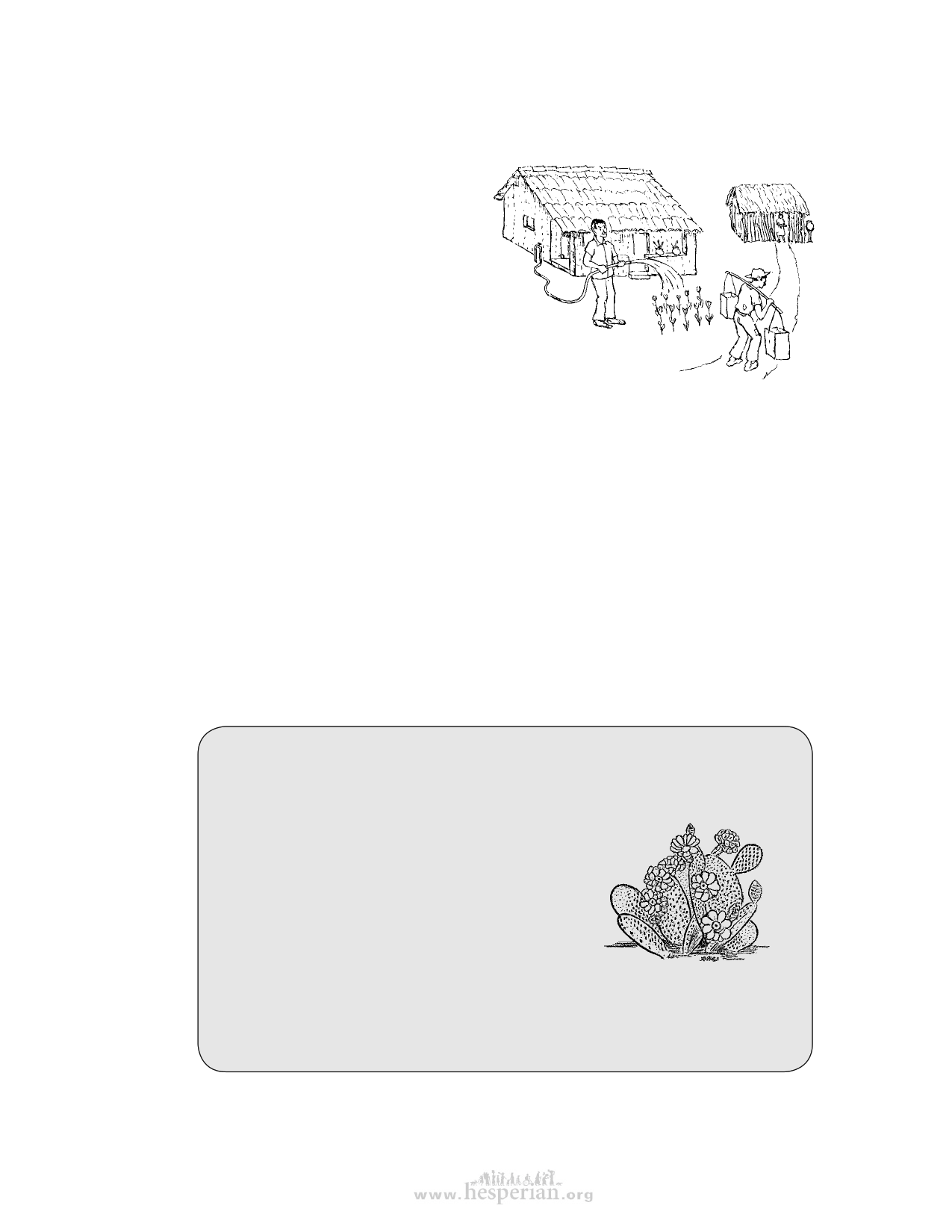
Water for Life 21
What are the barriers to planning a water project?
There may be many reasons why a
community lacks safe water. Problems
might include lack of money, lack
of knowledge about building water
systems, lack of support from the
government, or lack of participation by
people in the community. To achieve
the goal of safe water, the barriers
must be identified and removed one by
one.
People are more likely to improve
their water source and to maintain a
water system when they see:
• immediate community benefits
such as more water, easier
access, or less disease.
A water project should benefit
everyone in the community equally.
• low cost.
• only small changes in daily routine.
• positive results such as less mud, fewer mosquitoes, or more water for home
gardens.
Solutions exist within the community
Throughout history, every culture has developed ways of finding and protecting
water. People have used divining rods, invented devices for lifting and transporting
water, planted trees to attract rain, and made laws to encourage neighboring tribes
and villages to share water, prevent conflicts, and preserve this precious resource for
future generations.
Villagers teach development workers
A group of development workers came to a Colombian mountain village to help
the villagers fight diarrhea by protecting their water sources. When they visited the
village spring, they saw that cattle and soil erosion
affected the spring. The development workers
suggested two simple solutions- to put up a barbed
wire fence to protect the spring, or to graze their
cattle elsewhere.
The villagers did not like these ideas. They
predicted that the barbed wire would be stolen
before long, and they did not have enough land and
money to make proper cattle pastures. But seeing the
problem, they came up with a solution that would
work. Everyone from the village came out to plant prickly vegetation upstream from
the spring. This forced the cattle to drink water at lower places along the river and
solved the problem.